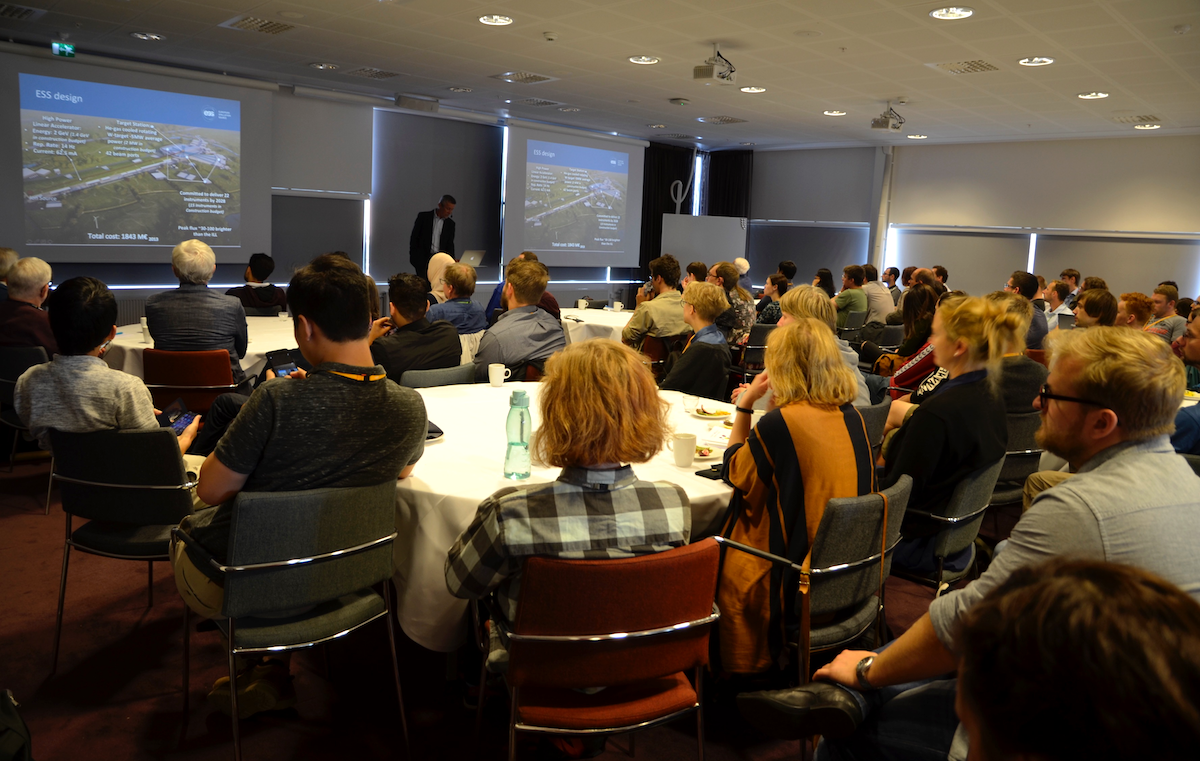Junior Researchers Prepare for Materials Science of the Future

At the end of August, Ronneby in southern Sweden became a home to approximately 80 PhD and Master students who decided to use their summer break to learn more about advanced materials design. The week of lectures from world-leading experts in the field was followed by a visit to the next-generation neutron and X-ray sources located just a short drive from the event venue.
After they have arrived to Lund, the students split into two groups. The first groups took a bus tour of the busy ESS construction site, where they could see ongoing works on one of the experimental halls and the target station. In a short introductory lecture, Deputy Science Director Shane Kennedy familiarized the students with the unique capabilities of ESS and explained how the increased performance of the facility will push the boundaries of neutron science.
The second group visited the adjacent MAX IV Laboratory, which was inaugurated last summer and is currently the brightest X-ray source in the world. The European Spallation Source and MAX IV Laboratory will offer complementary experimental methods, allowing researchers to take full advantage of the unique properties of neutrons and X-rays.
Lasting Research Relations
Apart from establishing contact between students and research facilities, another unique feature of the RACIRI Summer School is that the program helps to build lasting relations between two generations of researchers. The fifth edition between 19-26 August 2017 in Ronneby was designed to support an open dialogue between the students and the well-established tutors. The mentoring activities in the program included for example one-on-one discussions at the end of each day, interactive poster sessions and highly dynamic science slams. Hanna Wacklin, Instrument Scientist at ESS, was one of the tutors and gave a lecture on neutron techniques for biomedical research.
Joint Initiative of RAC and IRI
The RACIRI Summer Schools are a joint initiative of the Röntgen-Angström Cluster (RAC) and the Ioffe-Röntgen-Institute (IRI), and play an important role in educating and training future users of research facilities such as the European Spallation Source or the MAX IV Laboratory. The RAC platform and the IRI Institute were established to strengthen research collaboration between Sweden, Germany and Russia, all of which have excellent facilities for materials science research. The countries alternate in hosting the summer school every year.
The 2017 RACIRI Summer School in Ronneby was also supported by the EU-funded Cremlin project, and SwedNess, graduate school for neutron scattering operated by six Swedish universities.




 is funded by the European Union Framework Programme for Research and Innovation Horizon 2020, under grant agreement 676548.
is funded by the European Union Framework Programme for Research and Innovation Horizon 2020, under grant agreement 676548.